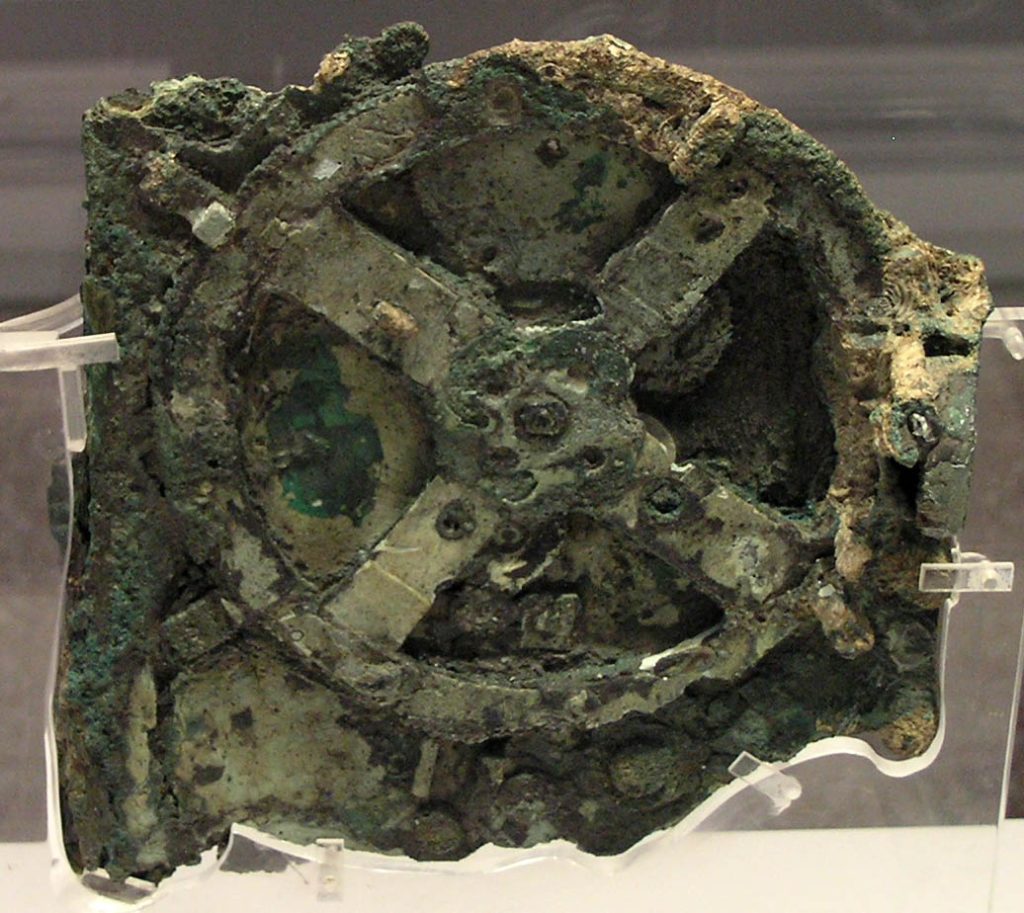THE MYTH OF U0026QUOT;LOST TECHNOLOGYU0026QUOT;
January 11, 2023

As my wife and I were watching the coverage of the end of the first NASA Orion program Artemis capsule return, I mentioned to her that at the end of the 1970’s Apollo program I never imagined it would be half a century before we returned to the Moon.
After a pause she asked a question: “Did this program use any of the hardware of the original Apollo program?”
I was a bit taken aback–I often forget that people who are not space enthusiasts like me wouldn’t know such things–but told her that this was all new hardware, and that the original Apollo hardware and their designs were long gone.
Which reminded me of a trope that is common when it comes to the Apollo program–the myth of “Lost Technology”.
What is “Lost Technology”?
The definition often used by “The Lost Technology of XXX” TV programs is any process or product produced in the past that we no longer understand and do not have the original process to reproduce.
Now, in strict terms this may be true in a few cases. We do not know how Damascus Steel was produced in the Near East beginning in the 3rd century CE, a process that was no longer in use by the early 19th century CE. Does this mean this technology is lost?
Modern artisans have produced an equivalent to Damascus Steel, so while we do not know how the ancients produced it, we can make its replacement today using modern processes and materials.
Does this mean the production Damascus Steel is a “Lost Technology”? Yes, in the sense that we do not know how it was originally produced. No, in the sense that we can produce its equivalent today, but using different techniques.
I would argue that this definition of “Lost Technology” has little useful meaning. While there is certainly value in knowing how ancient civilizations accomplished a specific task or produced a specific product, the fact that we can use modern techniques to accomplish the same outcome says we never lost the ability to create the end-product.
What we did lose was the institutional knowledge that the technology used in its original form.
Every industry has something called institutional, or tribal knowledge. Knowledge crucial to the industry which is never written down, either because its so basic that it’s not worth writing down or because it’s not something that can easily be written down.
Michael B, Quora
(I would add to this definition that some knowledge was never written down to keep it secret–this seems to have been the case for Damascus Steel.)
This is what happened with the Apollo program processes and designs. While we still have many of the original designs in blueprint or document form, the institutional knowledge is almost completely gone–those who had it are no longer with us, and the few that are still around probably can no longer remember.
So, is the Apollo project technology “lost”? In a very narrow sense, yes. We can no longer produce a Saturn V rocket in the same form that is existed 50 years ago–we don’t have the skilled craftsmen who could, for instance, do the hand-drilling of the rocket engine injector baffle plates or hand-weld the propellant piping seams.
But this is where the definition of “Lost Technology” becomes meaningless.
Why, with the knowledge and processes advanced by 50 years, would we want to try to produce the same rocket engines in the same way it was done then? We can do far better with what we have learned since then, with the systems we now have.
Except for those–I am one–who would love to see that lovely old beast back in operation for one more flight, the fact that we can no longer produce it exactly as it was means little. Today, we can actually do better.
IT processes and products hardly seem old enough to fall prey to this “Lost Technology” syndrome, but computer technology changes much faster than the technologies of old.
And yet, we do see some of the effects of technology obsolescence that are close to producing “lost technologies”.
- Quite a few institutions still rely on decades-old programs written in Cobol, a language no longer actively taught and for which few tools still exist.
- The Defense Department’s Strategic Automated Command and Control System (DDSACCS), which is used to send and receive emergency action messages to US nuclear forces, runs on a 1970s IBM computing platform. It still uses 8in floppy disks to store data. “Replacement parts for the system are difficult to find because they are now obsolete.”
- Whatever you may have, it’s no doubt more current than the system that air traffic controllers use to tell pilots about weather conditions at Paris’s Orly Airport: Windows 3.1. That’s not a typo – these flight-critical systems use an operating system that came out in 1992. When the machines went down in November 2015, planes were grounded while the airport had to find an IT guy who could deal with computers that ancient.
- Sparkler Filters of Conroe, Texas, prides itself on being a leader in the world of chemical process filtration. If you buy an automatic nutsche filter from them, though, they’ll enter your transaction on a “computer” that dates from 1948. Sparkler’s IBM 402 is not a traditional computer, but an automated electromechanical tabulator that can be programmed (or more accurately, wired) to print out certain results based on values encoded into stacks of 80-column Hollerith-type punched cards.
All of these, of course, represent situations in which the product or system could be updated using more modern techniques, so they are not truly “lost”, except insofar as the original technologies are no longer in common use, and the users would be hard-pressed to make substantial changes or updates.
And therein, to me, lies the beauty of computer technology, its history, and its likely future.
We IT practitioners work in a world where nothing truly disappears or is lost. We keep old systems alive where appropriate, and we use the latest techniques to build new systems better than the old.
The myth of “Lost Technology” is just that–a myth.
Although I am glad that “lost” technologies are kept around in some form for us to see how far we’ve come, and to appreciate the amazing accomplishments of those who came before us.

 English | EN
English | EN 